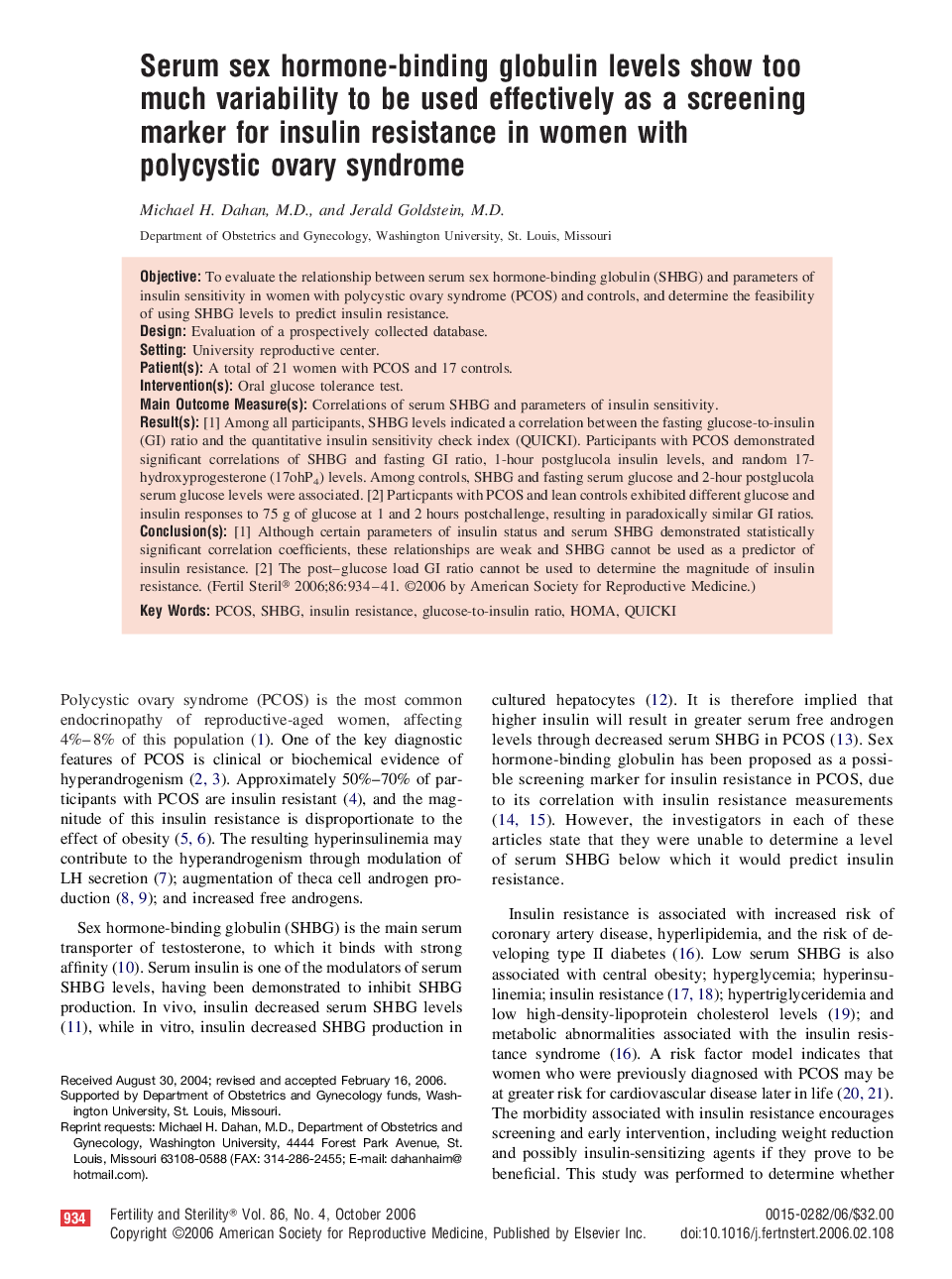| Article ID | Journal | Published Year | Pages | File Type |
|---|---|---|---|---|
| 3940566 | Fertility and Sterility | 2006 | 8 Pages |
ObjectiveTo evaluate the relationship between serum sex hormone-binding globulin (SHBG) and parameters of insulin sensitivity in women with polycystic ovary syndrome (PCOS) and controls, and determine the feasibility of using SHBG levels to predict insulin resistance.DesignEvaluation of a prospectively collected database.SettingUniversity reproductive center.Patient(s)A total of 21 women with PCOS and 17 controls.Intervention(s)Oral glucose tolerance test.Main Outcome Measure(s)Correlations of serum SHBG and parameters of insulin sensitivity.Result(s)[1] Among all participants, SHBG levels indicated a correlation between the fasting glucose-to-insulin (GI) ratio and the quantitative insulin sensitivity check index (QUICKI). Participants with PCOS demonstrated significant correlations of SHBG and fasting GI ratio, 1-hour postglucola insulin levels, and random 17-hydroxyprogesterone (17ohP4) levels. Among controls, SHBG and fasting serum glucose and 2-hour postglucola serum glucose levels were associated. [2] Particpants with PCOS and lean controls exhibited different glucose and insulin responses to 75 g of glucose at 1 and 2 hours postchallenge, resulting in paradoxically similar GI ratios.Conclusion(s)[1] Although certain parameters of insulin status and serum SHBG demonstrated statistically significant correlation coefficients, these relationships are weak and SHBG cannot be used as a predictor of insulin resistance. [2] The post–glucose load GI ratio cannot be used to determine the magnitude of insulin resistance.
